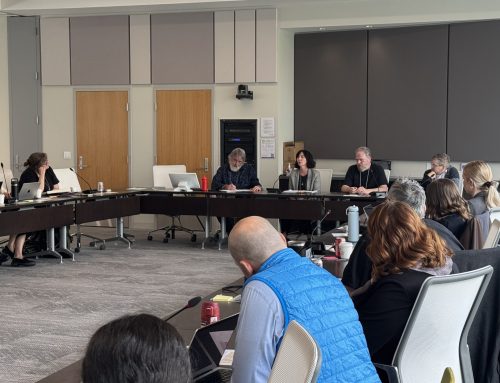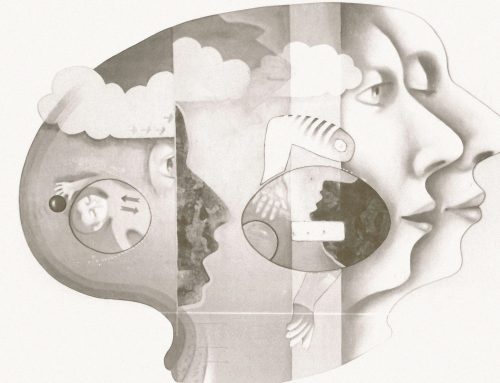On February 6, 2015, the Supreme Court of Canada declared in Carter v. Canada (Attorney General) that the prohibition of physician assisted death—section 14 and section 241(b) of the Criminal Code—is unconstitutional1. The Court stated that the prohibition was deemed to infringe on the rights of individuals under section 7 of the Canadian Charter of Rights and Freedoms: “Everyone has the right to life, liberty and security of the person and the right not to be deprived thereof except in accordance with the principles of fundamental justice.”2 As a result of the Supreme Court decision, Canada’s federal, provincial, and territorial governments have until June 6, 2016 to design and implement new legislation for physician assisted death. Authors of forthcoming legislation need to be mindful of slippery slopes created by conceptually vague terms that are central to physician assisted death. That is to say, the focus of this piece is on the construction of legislation, not the ethics of individual cases of physician assisted death. When it comes to creating social policy our concerns ought to be focused on the unintended expansion of practice.
In May 2015, the University of Toronto Joint Centre for Bioethics formed a Task Force (hereafter, the “JCB Task Force”) to help clarify the ethical implications regarding the implementation of physician assisted death and to provide recommendations to inform the development of its policy and practice in Canada.3 The JCB Task Force, following the Supreme Court’s statement, agreed that eligibility for physician assisted death should be accessible to a capable adult whose consent is clear and voluntary (cannot use substitute decision-makers, proxies, or advanced medical directives), who has a grievous and irremediable medical condition that is causing enduring and intolerable suffering. In other words, the eligibility criteria focus on two core concepts: autonomy (i.e., capable to give clear and voluntary consent) and suffering.
In February 2016, the Parliament appointed Special Joint Committee on Physician-Assisted Dying (henceforth, the “SJC”) released a report with substantive safeguards, procedural safeguards, and 21 recommendations for the legislative framework of physician assisted death. The substantive safeguards mirror the eligibility criteria laid out by the Supreme Court and the JCB Task Force. The procedural safeguards include the following: (1) two independent doctors must conclude that a person meets the eligibility criteria; (2) a request must be in writing and witnessed by two independent persons; (3) a waiting period is required and determined by the patient’s attending physician; (4) annual reports are to be tabled in Parliament; and (5) support and services should be improved to ensure requests are based on free choice, particularly for vulnerable people.4
As noted above, authors of forthcoming legislation need to be mindful of slippery slopes created by conceptually vague terms. These conceptual slippery slopes arise when the concepts used to establish criteria governing any practice are vague, potentially leading to abuse of the practice. Since the eligibility criteria center around the two core concepts of autonomy and suffering, in what follows I intend to demonstrate how the vagueness in each core concepts leads to serious challenges for the authors of forthcoming legislation.
Suffering is a vague concept that leads to slippery slope concerns. As the Supreme Court did not specify whether suffering is limited to physical suffering, the JCB Task Force was divided about excluding those with a psychiatric disorder from meeting the eligibility criteria. The slippery slope concern about the ambiguity of suffering is that it will lead us from cases involving oncological and neurological diseases to cases involving psychiatric disease. This is problematic precisely because suicidal ideation is a feature of psychiatric disease, thus those who would come forward are just the sort of people (i.e., vulnerable persons) who the state has an obligation to protect from killing themselves. However, due to the vagueness of suffering, the expansion from relatively uncontroversial cases of physical suffering to cases involving psychological suffering is inevitable. We can see this through the SJC’s following recommendation:
RECOMMENDATION 3: That individuals not be excluded from eligibility for medical assistance in dying based on the fact that they have a psychiatric condition; and
RECOMMENDATION 4: That physical or psychological suffering that is enduring and intolerable to the person in the circumstances of his or her condition should be recognized as a criterion to access medical assistance in dying.
Autonomy is also a vague concept, leading to its own set of slippery slopes. Although the JCB Task Force concurred that physician assisted death should be restricted to adults, they stated that cases can be envisioned where exclusion by age alone seems unethical. If physician assisted death is really driven by moral considerations such as respect for autonomy, then we know that people before the age of 18, at least some of them, can make decisions about withdrawal of life support or refusal of therapy. The problem with grounding the practice of assisted physician death autonomy is that it will inevitably lead from relatively uncontroversial cases of competent adults expressing a wish to die to children who are deemed to possess decisional capacity. We can see this through the SJC’s following recommendation:
RECOMMENDATION 6: That the Government of Canada implement a two-stage legislative process, with the first stage applying immediately to competent adult persons 18 years or older, to be followed by a second stage applying to competent mature minors, coming into force at a date no later than three years after the first stage has come into force.
Another worry is that any legislative attempt to restrict physician assisted death to adults is likely to be subject to a Charter challenge. Permitting capable adults entails permitting mature minors (as well as other vulnerable persons) under section 15 of the Canadian Charter of Rights and Freedoms: “Every individual is equal before and under the law and has the right to the equal protection and equal benefit of the law without discrimination and, in particular, without discrimination based on race, national or ethnic origin, colour, religion, sex, age or mental or physical disability.”5 Although the Supreme Court stated that it was unnecessary to consider whether there was a section 15 violation, having concluded that the prohibition of physician assisted death violates section 7.
Similar to the slippery slope from competent adults to children, another problem with grounding the practice of assisted physician death autonomy is that it will inevitably lead from relatively uncontroversial cases of competent adults expressing a wish to die to incapable adults who have previously expressed a wish to die. We can see this through the SJC’s following recommendation:
RECOMMENDATION 7: That the permission to use advance requests for medical assistance in dying be allowed any time after one is diagnosed with a condition that is reasonably likely to cause loss of competence or after a diagnosis of a grievous or irremediable condition but before the suffering becomes intolerable. An advance request may not, however, be made, prior to being diagnosed with such a condition. The advance request is subject to the same procedural safeguards as those in place for contemporaneous requests.
The authors of new legislation ought to be focused on the unintended expansion of the practice of physician assisted death. Undoubtedly, having strict and rigorous criteria for physician assisted death regulations will be needed; yet, our ability to author such criteria is undermined by these conceptual slippery slope concerns. Due to the vagueness of suffering, we must be wary of the slippery slope from cases of physical suffering to cases involving psychological suffering. Due to the vagueness of autonomy, we must be wary of the slippery slope from cases of competent adults expressing a wish to die, to children who are deemed to possess decisional capacity, to incapable adults who have previously expressed a wish to die. It will be important to keep in mind the intended recipients of physician assisted death, but it is essential that the authors understand their role in protecting individuals from the unintended expansion of this practice.
1Carter v. Canada (Attorney General), 2015 SCC 5
2Canadian Charter of Rights and Freedoms, Part I of the Constitution Act, 1982, section 7.
3University of Toronto Joint Centre for Bioethics (JCB) Task Force on Physician Assisted Death. “After Carter v. Canada: Physician Assisted Death in Canada Report and Recommendations.” December 14, 2015.
4Parliament Special Joint Committee. “Medical Assistance in Dying: A Patient-Centred Approach.” February 2016.
5Canadian Charter of Rights and Freedoms, Part I of the Constitution Act, 1982, section 15.
Pictured above: Hippocrates refusing the gifts of Artaxerxes (from Wikimedia Commons)






